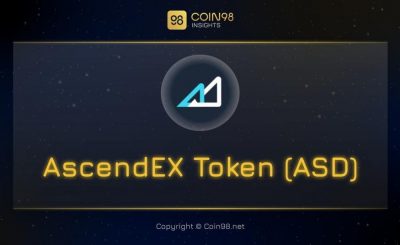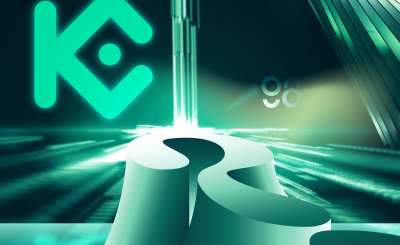Quick take
- The current blockchain network structure has limitations that greatly affect the interests of users, and one of them is MEV.
- MEV is a testament to the power of miners and its negative effects on the blockchain network in general and DeFi users in particular.
- Current Mev solutions include: Proposal EIP 11559, Flash bots and Chainlink FSS.
- Money flow may return to Ethereum in the near term.
Overview of blockchain structure and related issues
Networks like Bitcoin and Ethereum are ledgers that are secured by a decentralized network of computers (aka miners). Miners are responsible for aggregating and putting transactions on the block, after which the block is validated by the entire network. With this structure, the network ensures that all transactions are valid when posted on the blockchain.

Overview of how blockchain works
While that structure ensures transparency for the network, its limitation is that there is no order for transactions to be submitted on-chain.
Since each block can only contain a certain number of transactions, miners have full authority to select pending transactions in the mempool. So of course miners will choose the transactions that pay the highest gas fees to maximize their profits.
What is MEV?
MEV (Miner Extractable Value) can be understood as the profit that miners earn by taking advantage of their power. Miners do not need to process transactions according to the time a user places an order on-chain, but they can prioritize transactions that pay higher fees.

Example of MEV
This has created favorable conditions for miners to extract users by arranging the order of transactions to make the most profit for themselves. As a result, transaction fees in the network and slippage increase.
Types of MEV
While it is said that MEVs benefit miners, in reality most of the current types of MEVs come from third-party bots. Miners as the final validator of the transaction will have the right to choose which transactions to add to the block.
The characteristic of MEVs is that users often do not see their effects until the transaction is done. Impacts can include increased gas fees or larger-than-normal price slippage.
There are 2 most common types of MEVs:
Exchange Arbitrage
The most common and basic type of MEV comes from third-party arbitrage bots. Those bots will look for arbitrage opportunities between 2 or more exchanges and then buy low on one and sell high on the other.
With DeFi growing and the emergence of new exchanges, arbitrage opportunities are also increasing, thereby increasing competition among bots. Since miners prioritize transactions that pay high fees, this leads to bots pushing fees higher.
While this has the good side of helping to balance the token price between exchanges, on the downside, they cause the network to congest because there is a large amount of transactions from bots and push gas fees up.
Exchange Front-running
Another type that directly affects users is the exchange front-running bot, which can monitor large pending transactions on the mempool and utilize them for profit.
Eg:
A $1 million trade is being placed in the mempool, bot detects it and issues another one with higher gas fees, bot’s trade is executed first and causes slippage resulting in less swap for swaps more property. In the end, the bot gets a better price to sell its assets.
Similarly, exchange front-running bots also compete with each other and offer high gas levels while still generating profits (bidding war) ⇒ directly affecting the network.
The above two types represent the most popular types of MEV today, in fact there are still many other types that have different effects on users. Miners simply choose the opportunities that give them the greatest profit.
In the position of a DeFi user, having to transact at too high a cost greatly affects the user experience and strategies for finding opportunities on the Ethereum ecosystem.
Another caveat is that while bots can only change the order of transactions by paying high gas fees, Miners can tune and add their own transactions to the block for free.
Solution
To overcome the weaknesses of the Ethereum network, we need solutions that directly address the core of the problem, that is The ability to select transactions is added to miners’ blocks.
Some prominent solutions today include: (1) Proposal EIP-1559, (2) Flash bots, (3) Chainlink FSS.
Proposed EIP-1559
EIP-1559 is the Ethereum improvement proposal proposed in 2019. It introduces a new concept called Base Fee.
Base Fee represents the minimum fee to be paid for a transaction, Base Fee is paid per block and it can be adjusted up or down depending on how congested the Ethereum network is. Base Fee is the part of the transaction fee that is burned.
In addition, in each transaction, users can add tips to the Base Fee to incentivize miners to execute their transactions first.
EIP-1559 also proposes to double the network capacity, by changing the max gas limit for each Block from 12.5M to 25M.
What problem does EIP-1559 solve?
EIP-1559 helps:
- Make transaction fees more predictable.
- Reduce delays in transaction confirmations.
- Improve user experience by automating the bidding system.
Flashbots
Instead of letting bots compete for gas fees, Flashbots took advantage of the fact that miners could add their transactions to the block for free, creating a portal that connects directly to miners. Bots will bid directly with miners to add their transactions to the block.
This is one of the reasons why gas fees have decreased recently, in the chart below we see that the number of transactions with 0 Gas is increasing significantly. With the creation of benefits for both users and miners, we can fully expect gas fees to continue to decrease in the near future.

%blocks contains at least 1 transaction with zero gas fee
While this is a good and effective way to reduce gas fees, compromising with and paying miners directly is not a good practice in the long run.
Chainlink FSS
Chainlink FSS is a solution that applies oracle to determine the order in which transactions are submitted on-chain, thereby reducing the impact of MEV on the network thanks to the “first come first serve” strategy.
The FSS solution can be applied without changing the base layer structure of the blockchain and is fully compatible with users’ wallets.

Example of Chainlink FSS
Closing Thoughts
MEV is one of the biggest dilemmas of blockchain and currently remains unsolved, but in the short term projects like Flash bots are really effective in reducing gas fees.
The Ethereum blockchain itself is the blockchain with the most breakthroughs, the largest number of dapps and the largest user base at the moment. Given the characteristics that the network offers, if gas fees fall below 40 or even 30, it is likely that the money that is looking for yield in other chains will return to Ethereum.
Epilogue
Above is the information about MEV and current solutions, hopefully providing readers with the necessary information about the change taking place on Ethereum.
Source: What is Miner Extractable Value (MEV)? Cash flow solutions and trends
– TechtipsnReview






